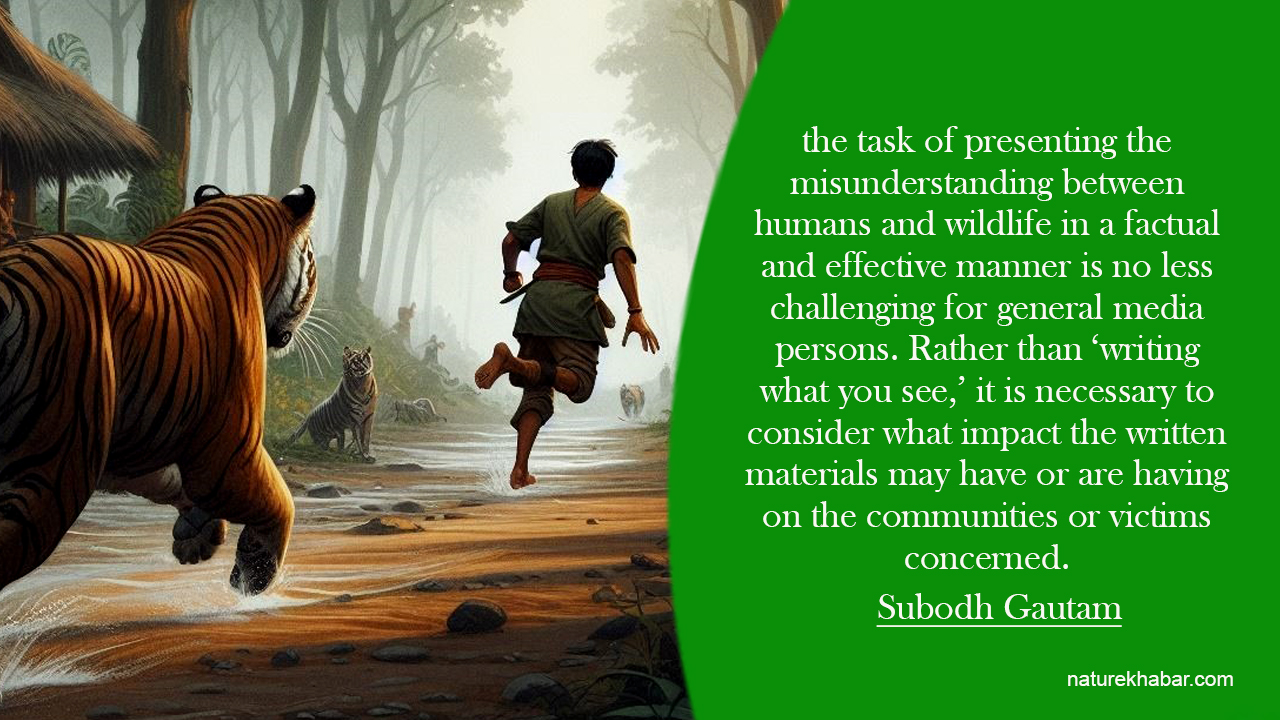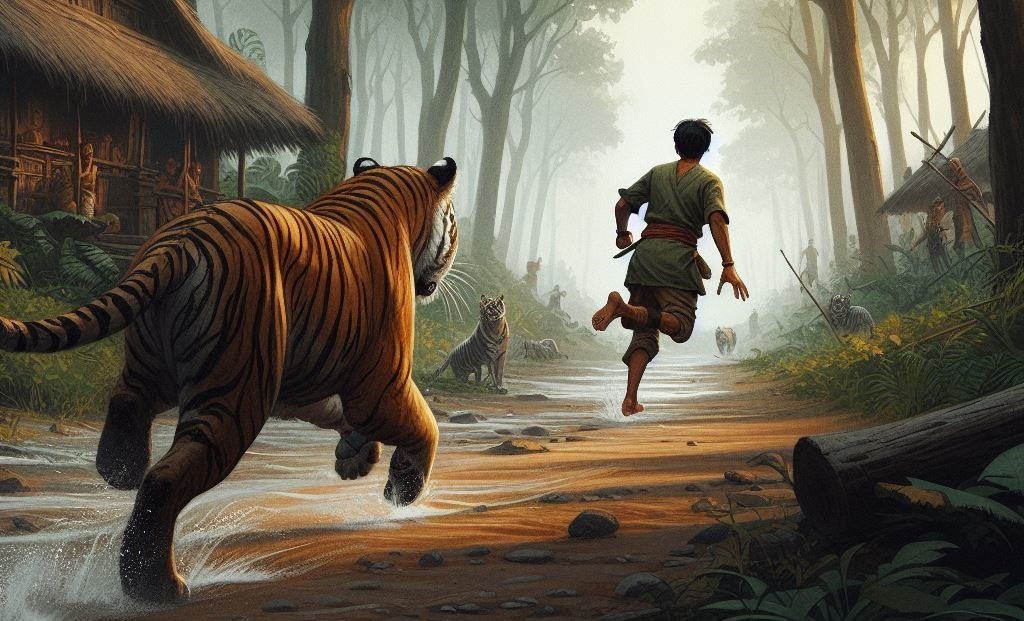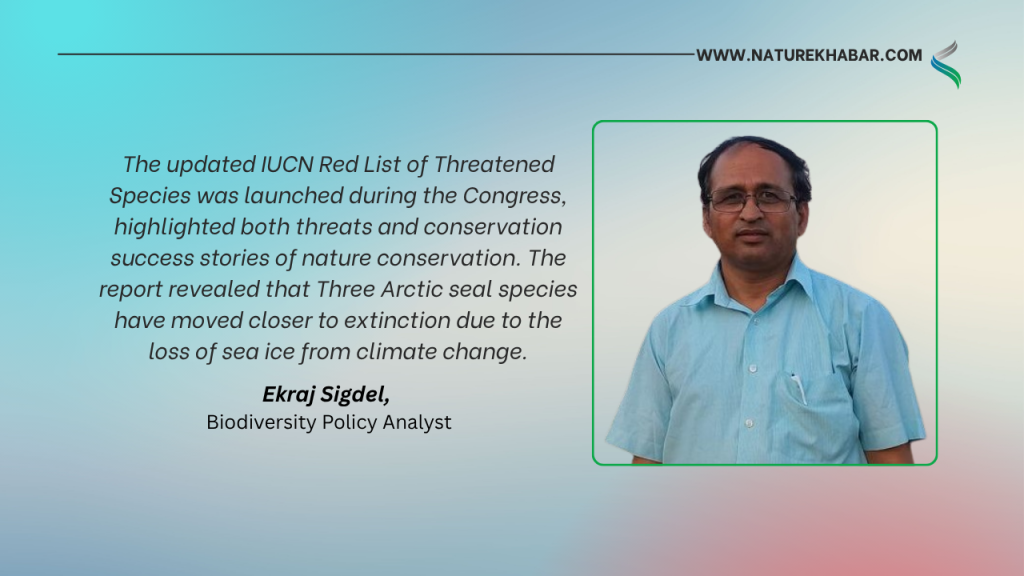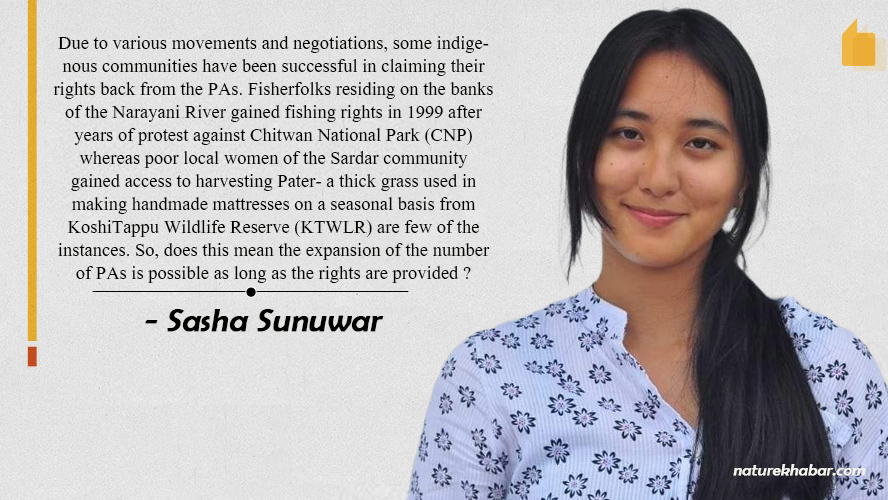Tales of Coexistence: Rewriting Human-Wildlife Narratives

When Prime Minister KP Sharma Oli said at a public event in the capital about two months ago, 'You cannot raise tigers by feeding them to humans,' the country was shaken. Everyone thought, 'What could a responsible person like the Prime Minister say, like this?' Giving a clear message that the life of a wild animal cannot be greater than human life, he not only satirized the government and administration under his leadership, but also shook the international donor agencies and organizations that are supporting wildlife conservation in warning language.
Why did Prime Minister Oli make such a speech? Surely, the news about humans and wildlife that comes in the mass media (newspapers, online, television, etc.) every day must have had an impact on him. In fact, not only the Prime Minister, but also the citizen form a general opinion on any topic or issue through the materials published and broadcast in the media.
Therefore, there is no doubt that the materials we present should always be factual, balanced, clear and simple. The world is now looking for news that not only highlights problems but also plays an important role in solving them. And, only such materials have a positive impact on policymakers, general readers, affected communities, and the general public. Media materials that are incorrectly presented, exaggerated or sensationalized do more to aggravate problems than to solve them. It seems that more attention should be paid when collecting, writing, publishing or broadcasting media materials related to those who can speak (humans) and those who cannot speak in a way that humans can understand (wildlife).
Therefore, the task of presenting the misunderstanding between humans and wildlife in a factual and effective manner is no less challenging for general media persons. Rather than ‘writing what you see,’ it is necessary to consider what impact the written materials may have or are having on the communities or victims concerned.
How can the increasing incidents of misunderstanding between humans and wildlife be presented? Initially, it was called human-wildlife conflict. And, even now, most of the media outlets are using this term. But recently, there has been an increase in the number of people who prefer to call it ‘misunderstanding’ rather than ‘conflict’. It seems that writing ‘misunderstanding’ in place of ‘conflict’ would be even better. In recent days, it has started to be interpreted as coexistence between humans and wildlife rather than conflict and misunderstanding. Since the concept of safeguarding the existence of both humans and wildlife has come to the fore, it is the responsibility and accountability of the media to make it meaningful. Anil Prasai, Senior Conservation Officer of the National Trust for Nature Conservation (NTNC), suggests emphasizing coexistence.
This emphasis is on promoting coexistence. Therefore, when we media professionals report on such incidents, topics and issues, it is important to understand at the outset that this earth is not only for the human race, this earth is complete only when the existence of these animals given by nature is also protected. If the existence of both sides is to be preserved, efforts should be made to examine the effects on both sides in a factual manner. In this way, before writing only about human damage or the effects on humans, the effects on wildlife should also be considered.

Humans are the highest conscious beings on earth, they can say, write, speak and show their problems. But this is not possible for animals or wildlife. Therefore, it is the human race that understands, remembers and speaks on their behalf. Moreover, this work is the responsibility of the mass media and the media persons and journalists working in the three. Not only this, researchers, conservationists and stakeholders and representatives of the three also have to speak and write impartially on behalf of animals and wildlife.
But here, how can mass media workers cover the incidents happening between humans and wildlife or what can be done to do justice to both sides. And, the issue is being discussed in terms of how the existence of both can be preserved. ‘Conservation work is challenging and complex, and information that goes viral creates even more stress. Therefore, the media should consider whether the information they provide is accurate or not for their own credibility,’ said Ganesh Pant, Chief Conservation Officer of Chitwan National Park, while addressing media personnel at an interaction organized in Sauraha a few days ago. He did not stop there, adding, ‘Is such information making people negative towards wildlife as a whole? If the information had been provided in a way that gave a real message. If the problem had been reported at that level, it would have been reported at that level.’ Although his words do not apply to all media outlets, we must accept that there are definitely problems and weaknesses in our reporting style.
Officer Pant is not the only one saying this; the response of Prakash Dhungana, Chairman of the Chitwan National Park Bufferzone Area Development Committee, is also almost the same. He suggests to media personnel, ‘There are many possibilities and things that can be done even in the misunderstanding between wildlife and humans. Those things have not come out. Not only do you need to write media materials that will increase your audience and readership, but also write for a positive impact. Also bring out stories of human interest and efforts made to manage the misunderstanding.’ Both complaints and suggestions are almost the same.
Therefore, it seems that while reporting such incidents, journalists should be very sensitive to the upcoming news. It seems that more effort should be made to make their content factual and balanced. Not only that, but the message that it is not only about highlighting problems, exaggerating and sensationalizing them, but also about solution-oriented journalism or expanding on solutions is confirmed by the above statements. That is what journalism suitable for the current era is.
Chitwan National Park is the second heritage site to be listed on the UNESCO World Heritage List. It is also the main habitat of the world's rare Bangle tiger and one-horned rhinoceros. Incidents of misunderstanding between the rare to common wildlife of this park and the humans living in the buffer zone have been increasing in recent days. Therefore, the voices of humans and wildlife here need to be brought out and heard in a factual and impartial manner. The meanings of these voices are very deep. The three have the same meaning not only within Nepal, but also outside of country.
Perhaps that is why, on the 8th and 9th February, an interaction and field visit was held specifically for media personnel in Sauraha, Chitwan. All the participants who addressed the inaugural session of this program jointly organized by the Government of Nepal, the National Trust for Nature Conservation, Chester Zoo, and Asar Darwin had the same complaint, ‘Most of the materials were exaggerated and sensationalized, which has made the general public’s perception of wildlife negative.’ Not all media materials are like that as they say. But there is a situation that needs to be improved.
In most of the materials about misunderstandings, media personnel only quote national park officials, but alternative perspectives, opinions and suggestions are equally necessary and important to solve such problems.
Therefore, one should not be stingy in revealing the main causes of human and wildlife incidents. An effort must be made to examine the origin, climax, and end point of the incident. This helps to bring out the problem from which side and how it started in a factual manner. The lack of data and details has weakened the news. Questions have also been raised about its effectiveness and reliability. Therefore, such data and details that the story requires should be collected at all costs. The way news is spread in a way that conveys the message that only wildlife are violent without investigating the facts must be gradually reduced. This will make the general public behave positively towards wild animals.
‘We do a lot to increase the audience in our content. That is wrong. We do not post videos of people blocking the path of elephants or chasing them, but we post action videos of elephants chasing people to increase the audience,’ said Virat Singh, an expert presenter from IUCN, who came to Chitwan Interaction as an expert, while comparing two images pulled from a video clip of an elephant attacking a person. He commented that exaggerating and sensationalizing the incident will only increase the problem and the human perspective on wildlife will also be negative. Not only this, Gobinda Pokharel, Conservation Officer of the National Trust for Nature Conservation (NTNC), while showing clips of some news published online, commented that more superficial and incident-focused articles are being published than in-depth ones.
Even after hearing and reading the above statements and comments, it seems that we must raise the level of our media content. Therefore, it is necessary for journalists to focus on capturing the essence of the incident. Most news or stories focus only on the opinions of experts. But the perspectives of local communities who are facing human-wildlife conflicts on a daily basis are ignored. Therefore, interviews with locals, as well as how they are coping with such incidents. What are those strategies? And whether they have been successful or not, it seems that it is necessary to include as many news stories as possible. It is time to try to convey the efforts of individuals or communities active at the local level to resolve the conflict. We also face the challenges of conveying success stories in an interesting and effective way.
We journalists describe the damage caused by wild animals to crops, but we are reluctant to show it in pictures or videos. Drone footage can be used to show the damage caused by elephants or other wild animals and to show the affected landscapes. This increases the impact and credibility of the news.
In most of the materials about misunderstandings, media personnel only quote national park officials, but alternative perspectives, opinions and suggestions are equally necessary and important to solve such problems. But we do not pay much attention to this. Independent experts, representatives of NGOs active in this field or community forest users should be given equal importance. For a multi-stakeholder approach, the views of conservationists and local political leaders should also be included. Discussions should be held with wildlife experts, local community members and policy makers. This not only makes the stakeholders feel responsible, but also increases its effectiveness.
Only then can accurate and factual material be prepared. It can reduce rather than increase misunderstandings. Such materials are also effective and credible. These materials can also be useful for conservationists, researchers and concerned bodies. Not only this, even the Prime Minister can receive accurate and factual information from such materials and accordingly can take the initiative to formulate policies and regulations that ensure the coexistence of humans and wildlife.

 Subodh Gautam
Subodh Gautam




Feedback